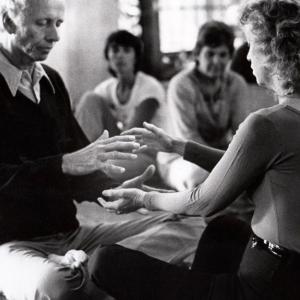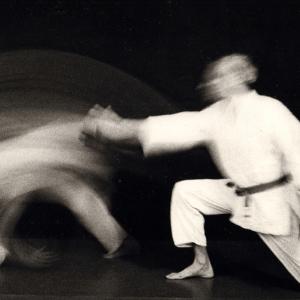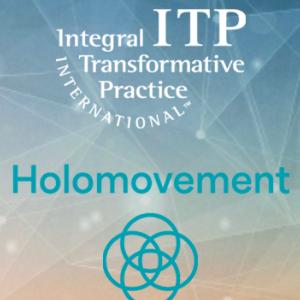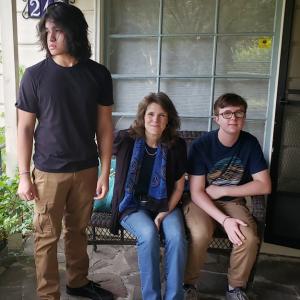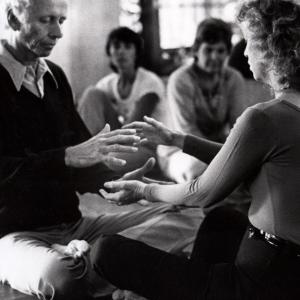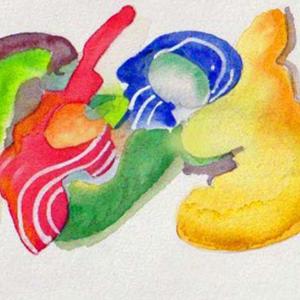George Leonard
LET – Yin Yang Harmony Motion (Tuiso)
Spotlight on ITPI Partners: Esalen Institute
Embodied Imagination
The Imagination: Bridging the Worlds
An Integral Approach for Navigating Transition:
ITP offers many helpful tools for navigating life’s transitions. ITPI Mastery teacher Kim Kristenson-Lee talks about how George Leonard and his wisdom of Aikido practices can inspire our journey through transitions.
LET – Automatic Door Blend
Sometimes a transition brings us face-to-face with opposing points of view or someone who just is “not present.” An LET practice called Automatic Door Blend uses energy to see issues from another person’s point of view.
ITP and My Life’s Transitions
After 34 years of involvement in ITP, practitioner Bill Sharp reflects on his first experiences with George Leonard and Michael Murphy. Through the years, his ITP practice has accompanied many life transitions.
ITP Core Practice Intentions – A Solid Place to Land and Stand
ITP’s nine Core Practice Intentions form the structure of ITP and serve as the roadmap for the journey of transformation of body, mind, heart and soul. They provide constant encouragement to ground us in our daily life and help us stand strong through life’s transitions. ITPI Mastery Teacher Roger Marsh explains the connection between the Core Practice Intentions and navigating transitions.
Energy from the Ground Up
In a world that rarely slows down, there’s a simple yet powerful practice that invites us to reconnect with nature, with our inner selves and with the present moment. Earthing (or grounding) is more than just walking barefoot on grass; it’s a way to tap into the earth’s energy, living a more balanced, purposeful and full-of-wonder experience.
ITP’s Nine Core Practice Intentions
ITP’s nine Core Practice Intentions form the structure of ITP and serve as the roadmap for the journey of transformation of body, mind, heart and soul. They provide constant encouragement to ground us in our daily life and can carry us through difficult times when our energy may waver.
The first two ITP Core Practice Intentions focus on autonomy and community – two sides of one coin. While ITP stresses the importance of individuality and free choice, there is grounding power in the support of the ITP community.
ITP Spotlight on Partners: The ITPI and Holomovement Collaboration
As each of us is on our personal journey, we have a shared responsibility to uplift the world around us. As ITPI encourages us toward these goals, we are connecting with partner organizations who have the same goals. These include Esalen, the Center for Purposeful Leadership, Evolutionary Sport and the Holomovement. ITP practitioner and Holomovement steward Jill Robinson talks about the ITPI partnership with the Holomovement.
ITP Community Spotlight on Kimberly Kristenson-Lee
Learn more about Kimberly Kristenson-Lee and the experience and insight she's gained as a long-time ITP practitioner and Mastery Teacher.
Startle and Center
Many things can startle you, causing you to become unbalanced and uncentered. At the same time, being startled by someone or something can also be viewed as a catalyst for becoming even more balanced and centered than before. For example, without denying the shock, a student who’s startled by the fact that he or she failed an exam can use the experience as an incentive to study more effectively for the next test.
ITP Community Spotlight on Christine Rickerby
Christine Rickerby met George Leonard when she heard his Aikido class through the ceiling of an art studio she was using. What followed was an opening to an enriching ITP practice and an opportunity to spend time with George at the end of his life.
ITP: Individual Practice and Cultural Pivot
Examine how ITP creates a cultural pivot by providing a personal path of awareness of the divine as well as a collective shift toward contemplative awareness for the well-being of society.
Perception of the Possible
What does it take to increase our capacity to pivot and shift direction, mindset and mood? Christina Grote explores the role that perception plays in our ability to pivot. Being aware of our options can make a huge difference in our transformation.
The Power of Disruption
After enjoying eight years as a successful head coach for university golf teams, Matthew Steinbach felt the comfort of familiarity was constraining his growth as a coach and as an individual. He examined the role of homeostasis in his life and decided to pivot.
LET – Soft Eyes
We usually look at our world with an agenda. We look at something. We look for something. What if we didn’t perceive the world through “hard eyes”? ITP Mastery Teacher Charlotte Hatch and ITP practitioners demonstrate experiencing the world through “soft eyes.”
ITP Community Spotlight on Matthew Cobb
Dr. Matthew Cobb started his professional ministry in The Episcopal Church (TEC) where he has served as campus minister, community organizer, healthcare chaplain, development officer, parish priest, indigenous missioner, leadership developer and spiritual director. ITP and the Ki of Cooperation play an important role in his personal and professional lives.
LET – Getting Off the Line
To achieve cooperation with another, it can help to look at the situation from the other person’s point of view. Leonard Energy Training offers an exercise to help us achieve this. ITP Mastery Teacher Charlotte Hatch teaches the exercise “Getting Off the Line,” reminding us to listen to the other person while taking care of ourselves.
Cooperation with Another: Through a Partner's Eyes
Cooperation with another person can be challenging during a brief encounter or throughout a lifetime. And, in the spirit of our practice, these encounters can prove to be transformative. ITPI Mastery Teacher Charlotte Hatch shares her personal insights gained through the lens of her Aikido studies and ITP.
GRACE: It’s More than an Acronym
The practice of GRACE is the opening move of the ITP Kata: Ground, Relax, Aware, Center and Energize. These steps can be called into action any time we need to come into the present moment. Beyond the acronym, grace is a powerful energy, a transmission of divine love or a higher consciousness that is freely given, often unexpectedly, received but not directly earned. ITPI board member and co-author of Living an Extraordinary Life Christina Grote talks about how ITP practices open us up to grace.
It Begins with GROUND
The Kata begins with grounding – a powerful and profound place to begin. ITP practitioner Dusty Niles describes how grounding activates a source of energy alive within us all. It also activates imagination and so much more.
Generosity with Self
Generosity with self is no small feat. We can be more dedicated to giving to others and overlook the importance of tending to our own needs. Generosity with self is essential to transform, especially through our ITP practice. In this essay, Pam Kramer describes her take on the topic.
Generosity Within Community
ITPI is the epitome of generosity within community, starting with the work and inspiration of Michael Murphy and George Leonard. The fruit of their generosity has blossomed throughout the world.
My Thoughts About Generosity
On the face of it, one could think that generosity is directly opposed to the survival instinct. Isn’t thinking “me, first” a major part of survival, and isn’t survival what every thought and action boils down to? This is pretty basic stuff. Why, then, bother being generous? Why give away one’s money, wisdom, and most precious of all, time, to anyone or anything else? Why does generosity, in its purest sense, feel so good?
ITP Spotlight on Rachel Hamilton
Learn more about Rachel Hamilton and the ways that a "bad boyfriend" experience opened her life to an ITP practice that enhances her life. Read what generosity means to her. “Generosity is the impulse to share what I have with others. I particularly love to share my spaces and my energy to create sweet gatherings. Vitamin C(onnection) is something we all need, and I love being the person to create the space for us to be with one another and be alive with one another, whether it be to share joy or to process grief.”
The Ever-Developing Mind
With our minds, we think, we reason, we learn, we imagine, and we dream. We strategize, make decisions, and set intentions and goals. Through the capacity of self-reflection, the mind provides a sense of personal history and continuity to our lives, the sense of being ourselves… We discern truth from falsehood. We set our intentions for who we want to be in the world and what we want to accomplish in life.
Connections Through the Heart
In many cultures the heart was, and still is, considered to be the seat of intelligence and intuition, a special window into the world and its divine nature. When we see with the eyes of heart we can perceive things as they are without judgment. Our perception is filtered through the lens of love.
Powers of the Soul
Soul is another term that has many meanings in many different cultures and traditions, but in these pages, we use it to refer to the deepest part of our being. It is a part of us that is as essential as the body, mind, and heart; a part of us and yet beyond them all. You might think of it as our personal spark of the greater divinity, unique to each one of us. If you prefer another term, such as deeper or higher or original Self (with a capital S to distinguish it from the small self or ego), or even purpose, please use what is most meaningful for you.
Messages from the Soul
Body, mind, and heart interplay to inform our lives, for sure. But the soul speaks and lives through each of these aspects. This is the brilliance of the integral model we engage with ITP.
The Body as Teacher
ITP honors the body as an amazing teacher and guide. Further, we believe that the body is capable of transformation in both ordinary and extraordinary ways. ITP includes several practices to enhance the health of the body, such as the ITP Kata, aerobic exercise, strength training, and conscious eating. The body is our foundation, our vehicle to express ourselves in the world, and it requires appropriate care to realize its fullest potential.
ITP Community Spotlight on Matthew Steinbach
Learn more about Matthew Steinbach and how ITP has brought new insights to his daily life and his role as a coach to student-athletes. “I firmly believe we are on the edge of cultural transition towards integral transformative practice. My work with the younger generations leaves me full of promise and optimism.”
What I Love About the ITP Worldview
ITP sees human beings as essential and integral components for the world’s positive evolutionary advance. As we connect with and cultivate the Divine inside each and every one of us, little by little, we bring more and more of that Divine into our own lives and out into the world. Roger Marsh, ITP’s Director of Training and Consulting, shares his thoughts about the ITP worldview.

